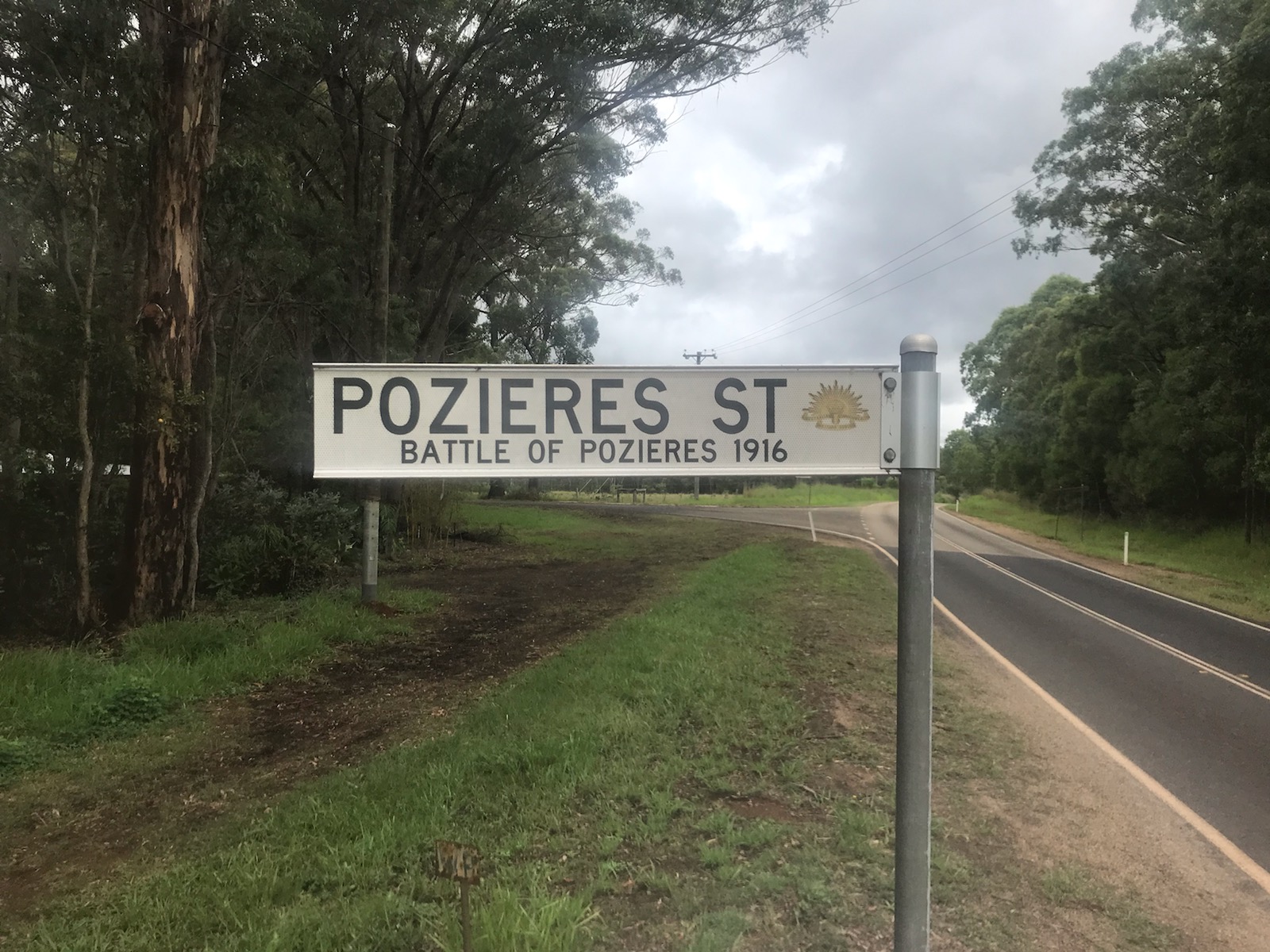Our Roads of Remembrance project identifies roads in our region named after World War I service personnel and events.
Information about the roads has been checked through normal research channels, including family records, National Archives, military records, etc., however there remains the possibility that information may differ between sources. Contact us if you have information about other roads that should be included, or evidence that conflicts with what appears below.
The project was funded by the Australian Government’s Department of Veterans Affairs Armistice Centenary grant program in partnership with Tablelands Regional Council.
Driver John Allen (1891–1984)
John Allen, (S/No 258), 26th Battalion/7 Brigade Machine Gun Company. John was born in Port Douglas and served an apprenticeship in Atherton prior to the First World War. He enlisted in March 1915, was posted to Tel El Kabir, Egypt a year later. He served as a Farrier and Driver at Gallipoli and in France where he was injured in November 1916. He was subsequently awarded the Serbian Gold Medal for distinguished service. He married Kathleen Humphrey in England before returning to Australia ‘for home service’ in September 1917 and was discharged three months later.
John subsequently worked as a Farrier and Bridge Blacksmith. During the Second World War he trained Army engineers on the Atherton Tablelands. He retired in 1961 as a Foreman with Atherton Shire Council. John and Kathleen had seven children, one of whom was killed during the Second World War.
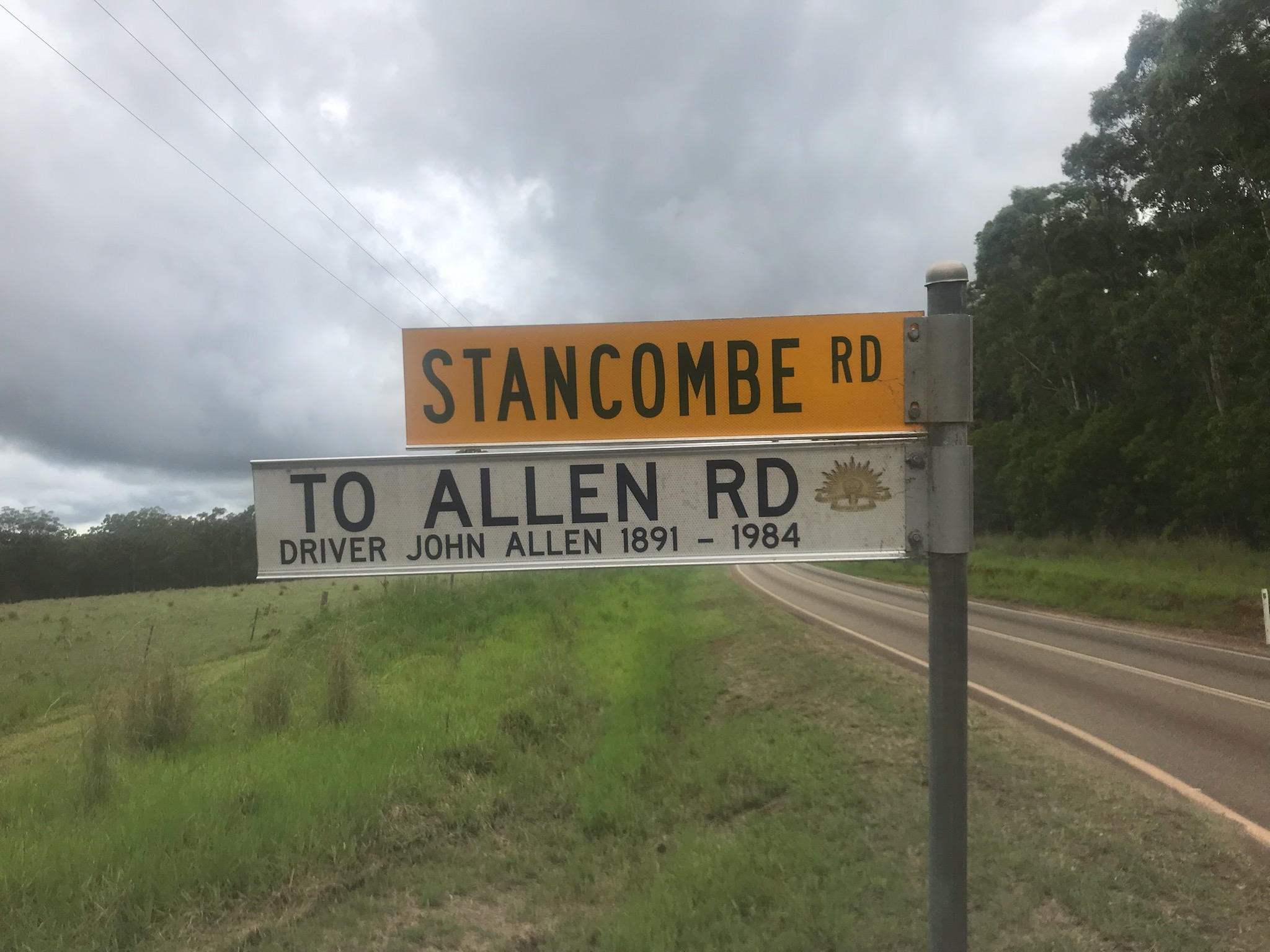
Private Christian Andricksen (1881–1945)
Private Christian Andricksen (S/No 7009) was born near Drammen, Norway and migrated with his family to New Zealand in about 1886. As a young man he moved to Australia and was farming at East Barron from 1910 to at least 1912 during which time he was naturalised as an Australian. Christian was farming in Innisfail when he enlisted in Townsville in 1917 and served in the 25th Battalion in France before being receiving a gunshot wound to the left arm and losing his left eye. He was invalided home in 1919 and began farming at Dayboro in 1923, before returning to New Zealand and finally settling in Hastings where he died in 1945. He is remembered by the naming of Andricksen Road and Andricksen Creek at Upper Barron.

Gallipoli 1915
Anzac Avenue commemorates both the allied attacks at Anzac Cove that started on 25 April 1915 and the wider contribution made by Australian and New Zealand Forces in the First World War. While ending up as a well planned and executed withdrawal in December 1915, the defeat is also seen as a defining moment in the creation of the national identity of the two former British colonies that had become independent only a few years earlier (Commonwealth of Australia 1901, Dominion of New Zealand 1907).
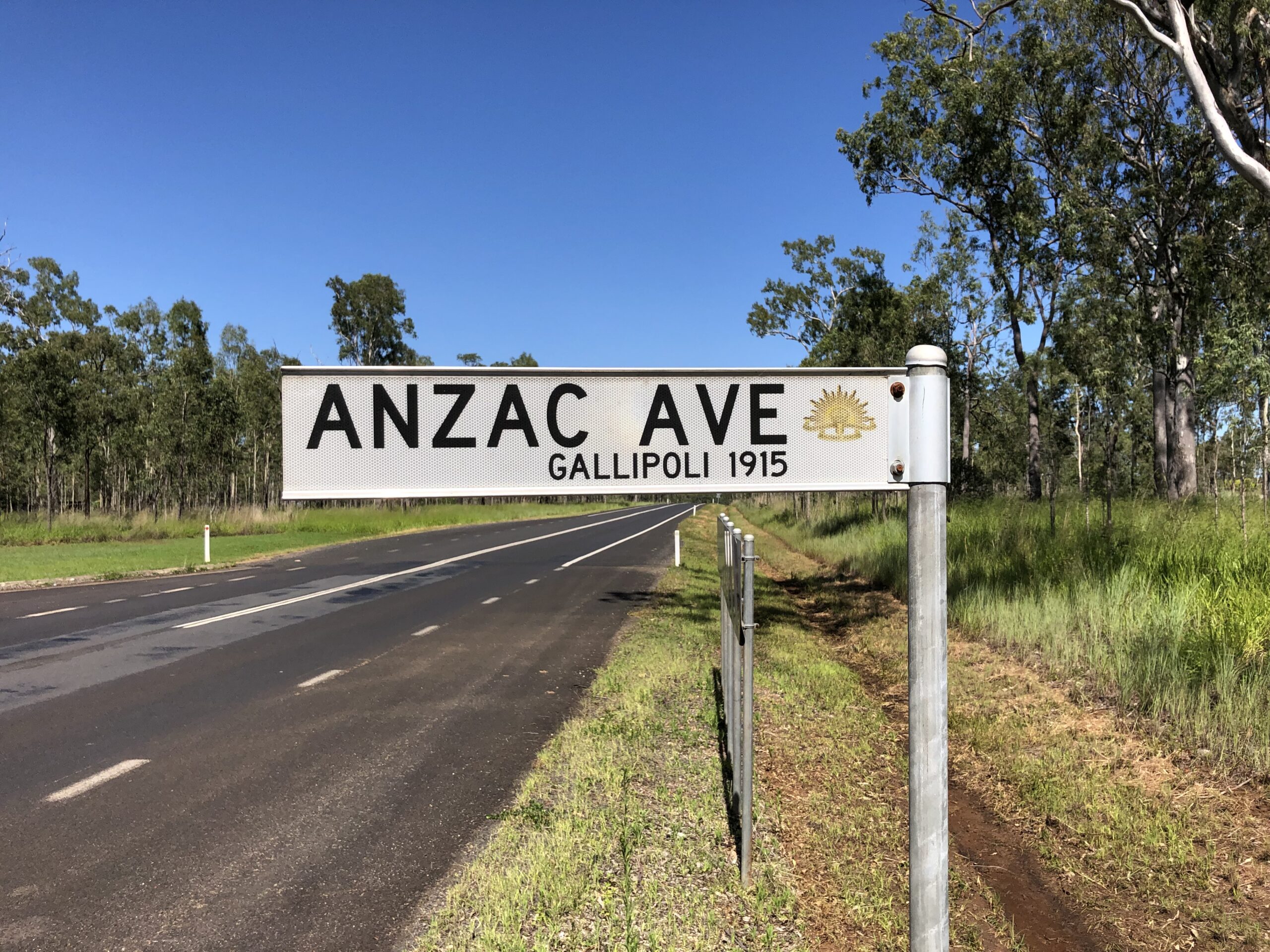
Sapper James Arbouin (1892–1969)
Sapper James Joseph Arbouin (S/No 6077) 15th Field Coy, Engineers AIF, worked in the mining industry prior to First World War. James enlisted in 1915 and was posted to Alexandria, Egypt 1916. He later served in France where he was severely wounded, a Bible in his top pocket probably saved his life. He received treatment in England before returning to Australia and being medically discharged. James returned to Irvinebank, married Bettie, with whom he had six children. After the war James was granted a soldier settlement farm near Tolga and was later the works manager for the Maize Marketing Board in Atherton. His wife died suddenly in 1941 and he married Louise Howard in 1943. James Arbouin passed away in July 1969.
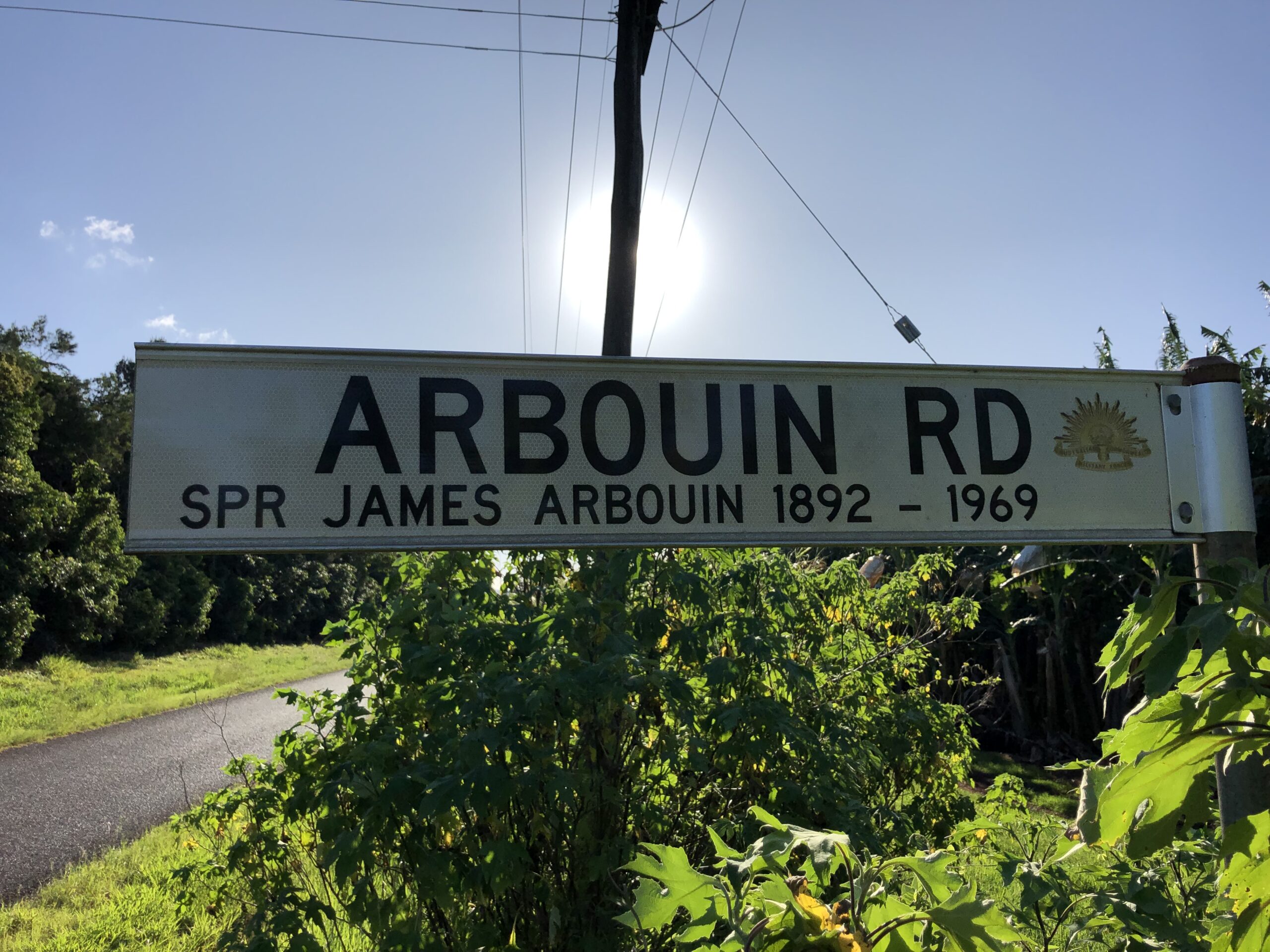
Private Harry Bowcock (1887–1974)
Private Harry Bowcock (S/No 2870A) 49th Batallion AIF, enlisted on 7 October 1916. Harry was born in Orford, Lancashire in 1887 and migrated to Australia in 1912 on the Orsova, arriving in Sydney on 23 May 1912. Before enlisting, Harry was a labourer at Selwyn, near Cloncurry, and a labourer and butcher at Saltmere, Mossman.
Harry embarked on the troop ship Marathon on 27 October 1916, arriving in Plymouth UK on 9 January 1917. He was posted to Étaples, France in May 1917 before heading to the frontlines where he was wounded in action at Messines on 7 June 1917 and hospitalised for six weeks. He was incorrectly reported as ‘killed in action’ at Westhoek Ridge, Belgium on 19 October 1917 although this was changed to ‘wounded’ a few days later. From 26 February 1919 to 26 August 1919 he undertook general engineering training at Stockton Heath near Warrington UK. On 7 August 1919 Harry, 31 years old, married Eva Mary Dunbavand, 27 years old. After several months leave ‘pending a family ship’ Harry and Eva sailed to Australia on the Port Napier on 21 December 1919. Harry was discharged on 29 March 1920 after disembarking on 10 Feb 1920.
By 1925 Harry and Eva had settled at Dawson Road, Atherton on a farm allotted under the soldier resettlement scheme. He never spoke about the terrible things witnessed in the trenches or complained of the debilitating effects of mustard gas and a shrapnel wound that stayed with him for the rest of his life. Harry died in January 1974 and is buried in Rockley Road Cemetery, Atherton.
(Biography reviewed and edited by descendants)
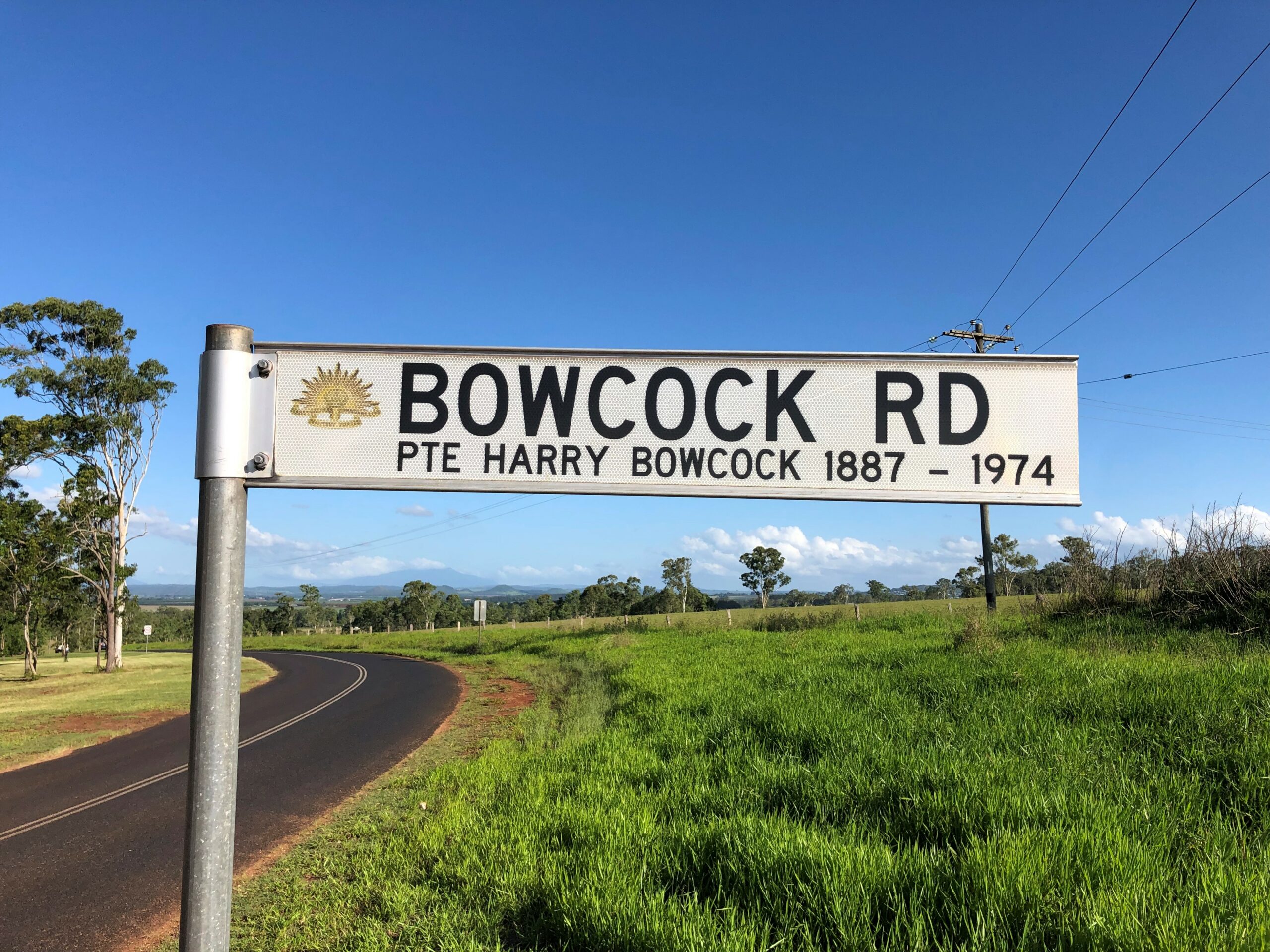
General Sir Henry Chauvel (1865–1945)
Sir Henry (Harry) Chauvel was a Queensland pastoralist with a distinguished military history including the Boer War, during which time he was promoted to Lieutenant Colonel. In the prelude to the First World War he played a pivotal role in development of the Australian Army, leading the Australian military forces in the Middle East. After the war he was appointed Inspector General and eventually Chief of General Staff. His appointment as a General in 1929 was the first to that rank. During the Second World War he continued to make significant contributions to the Armed Services. Chauvel died on 4 March 1945 and was given a state funeral.
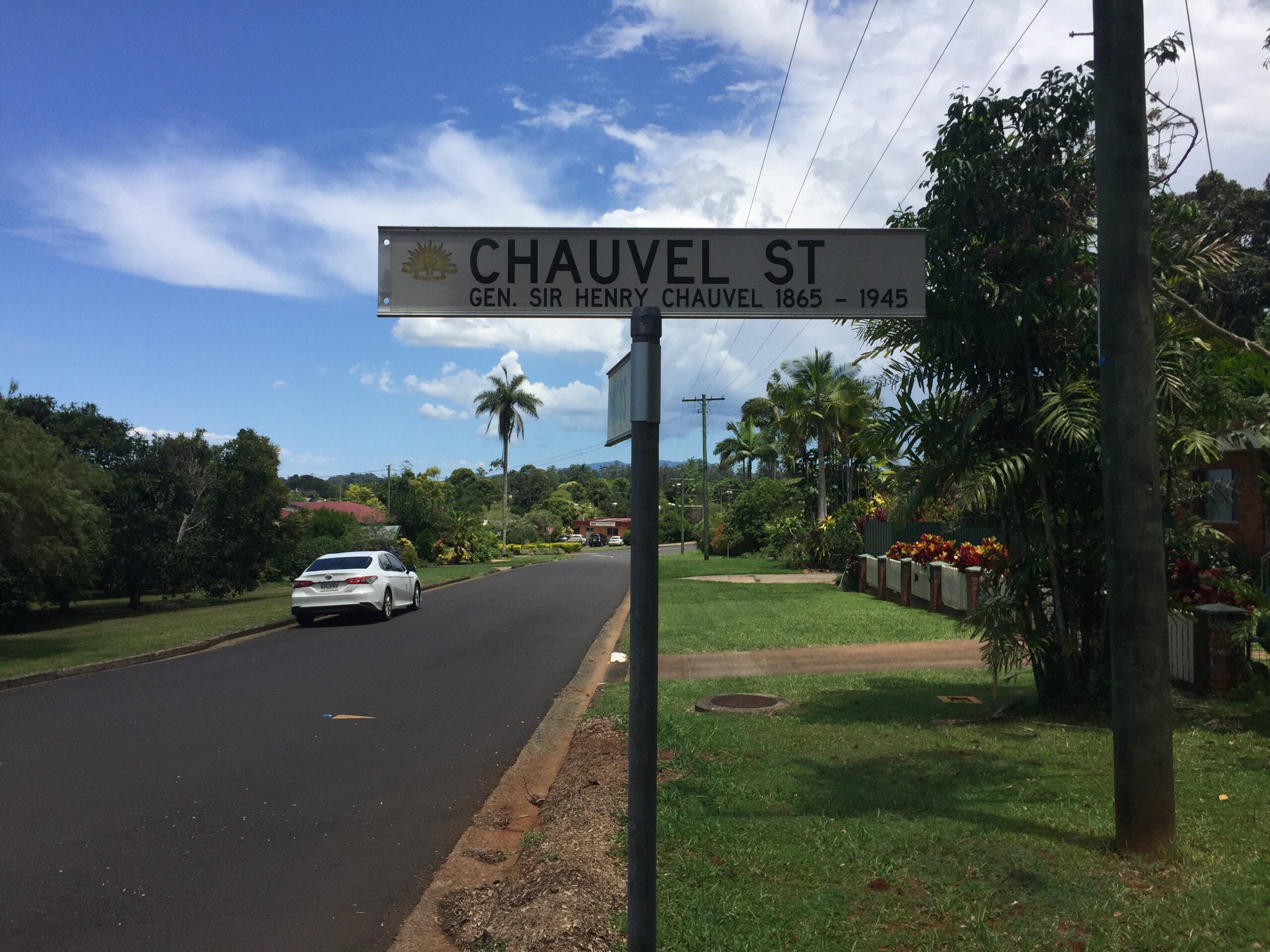
Private Henry Dalziel VC (1893–1965)
Henry (Harry) Dalziel was born in Irvinebank and worked as a locomotive fireman before enlisting in the AIF in 1915.
Harry Dalziel won the thousandth Victoria Cross (VC) at Hamel, France in 1918. Armed only with a revolver Harry captured an enemy gun position and, despite being injured, continued in action until receiving a severe head injury. On return to Australia in 1919 he was given a hero’s welcome at Norman Park, Cairns.
Harry and his wife Ida took up a soldier-settlement block near Atherton but the unviable block proved too demanding. Ida remained on the property while Harry relocated to Brisbane and became an accomplished songwriter. He subsequently married Elsie and had three children. In 1948 Dalziel sent his VC to (then) Princess Elizabeth as a gift for her first child. It was returned with a personal handwritten letter from the future monarch thanking him for his gesture.
Harry Dalziel died 24 July 1965 in Brisbane and was given a military funeral.
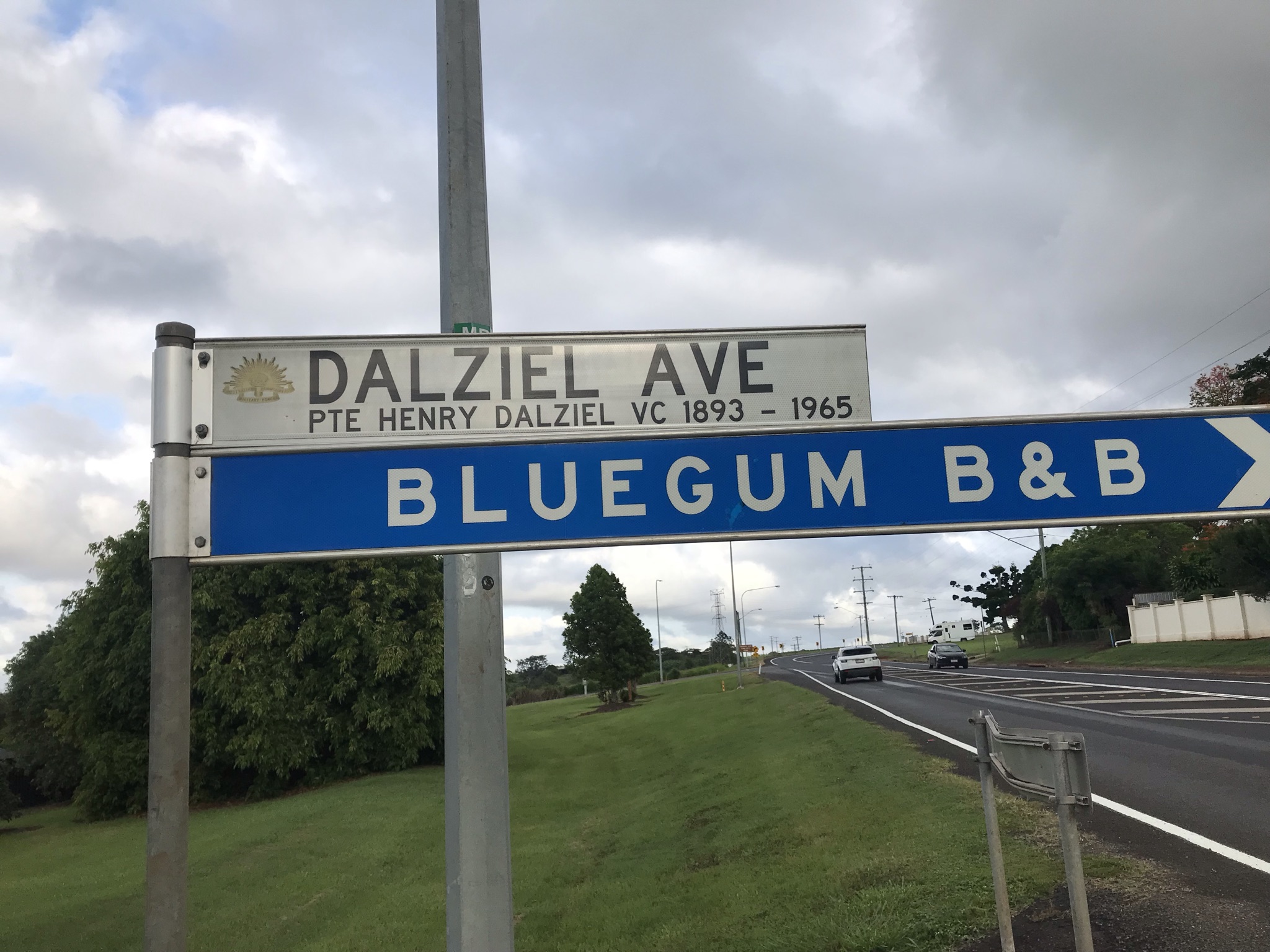
Private Alfred Elms (1895–1973)
Alfred Elms (S/No 1643) 47th Battalion was a horse driver before enlistment in Feb 1916, aged 20 years. Alfred’s mother was a Biboohra resident. He proceeded to France in November 1916 where he suffered an accidental injury to his foot in June 1917. Promoted Lance Corporal in early 1918 he attended the Australian Corps Signal School before returning to Australia on the Port Napier in May 1919. During his time overseas his mother wrote to the Army concerned that she had had no mail from him. The Department advised that, since there was no record of death or injury, it ‘maybe assumed he is with his unit’.
In 1921 Alfred married Monica Tobin at Weerimba and they had eight children. For nearly twenty years he was a teamster at Upper Barron. In the late 1940s Alfred was farming at Chermside and working as a truck driver. From about 1958 until the mid-1960s he was a labourer in Herberton but returned to Zilmere as a transport driver around 1967 where he remained until he died in July 1973.
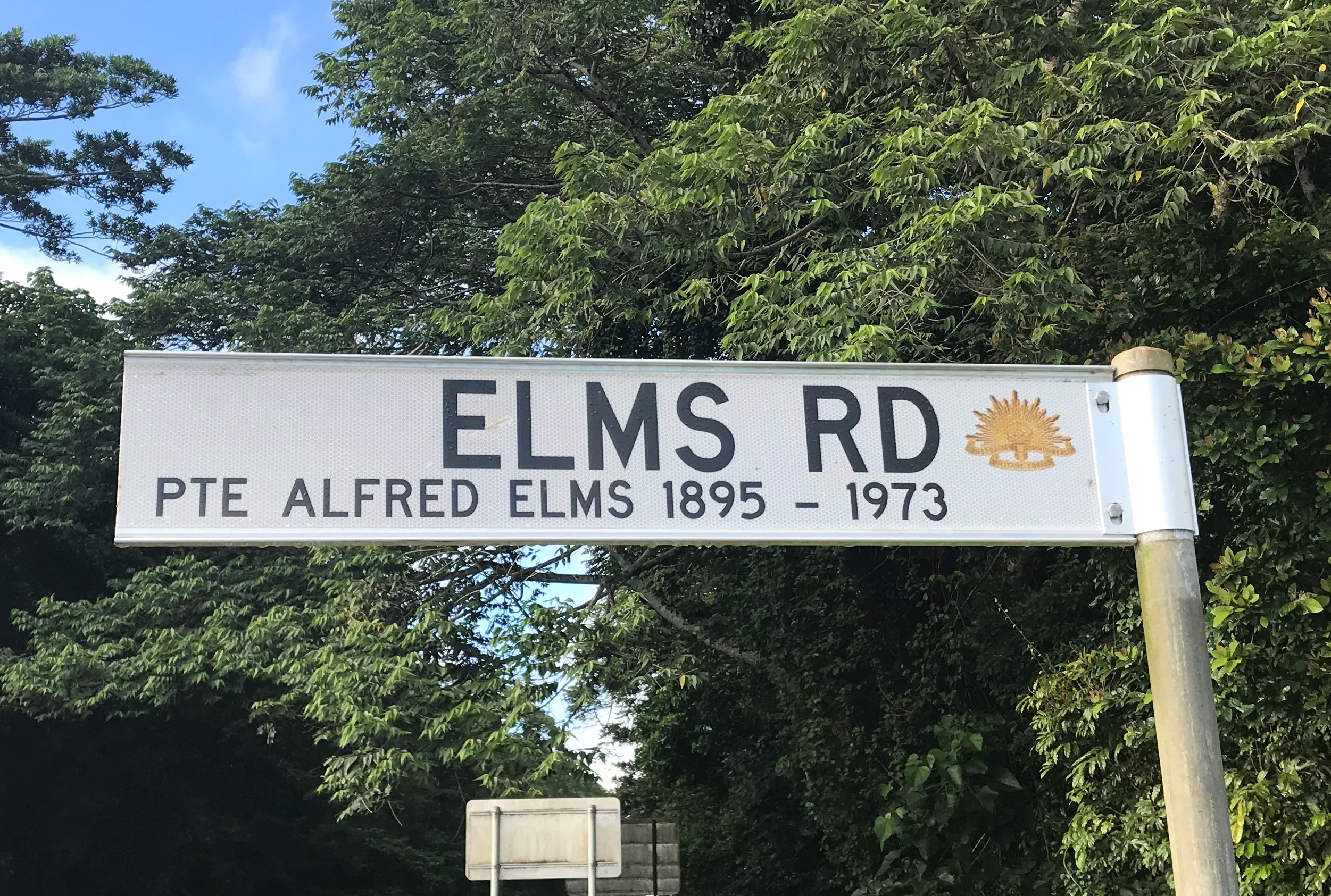
L/Corporal Henry Edward Phippo Kingcombe (1892–1916)
The Kingcombe family — Henry, his mother and sister — settled a Tablelands farm pre-First World War after migrating from Northampton, England some years before. Henry’s father was deceased. The road the farm was on became known as Kingcombe Road and is widely considered a memorial to L/Cpl Kingcombe.
Henry was an auctioneer and a Yungaburra Rifle Club member prior to enlisting aged 22 years in September 1914 with the 9th Battalion. Henry served at Gallipoli and, in February 1916, was Acting Company Sergeant Major with the 3rd Training Battalion. On transfer to France (9th Batallion) he was appointed Lance Corporal and was killed in action in July 1916. This occurred as the battalion sought to take objectives near Poizieres in an engagement between 19 and 25 July. Henry was one of the heavy casualties incurred.
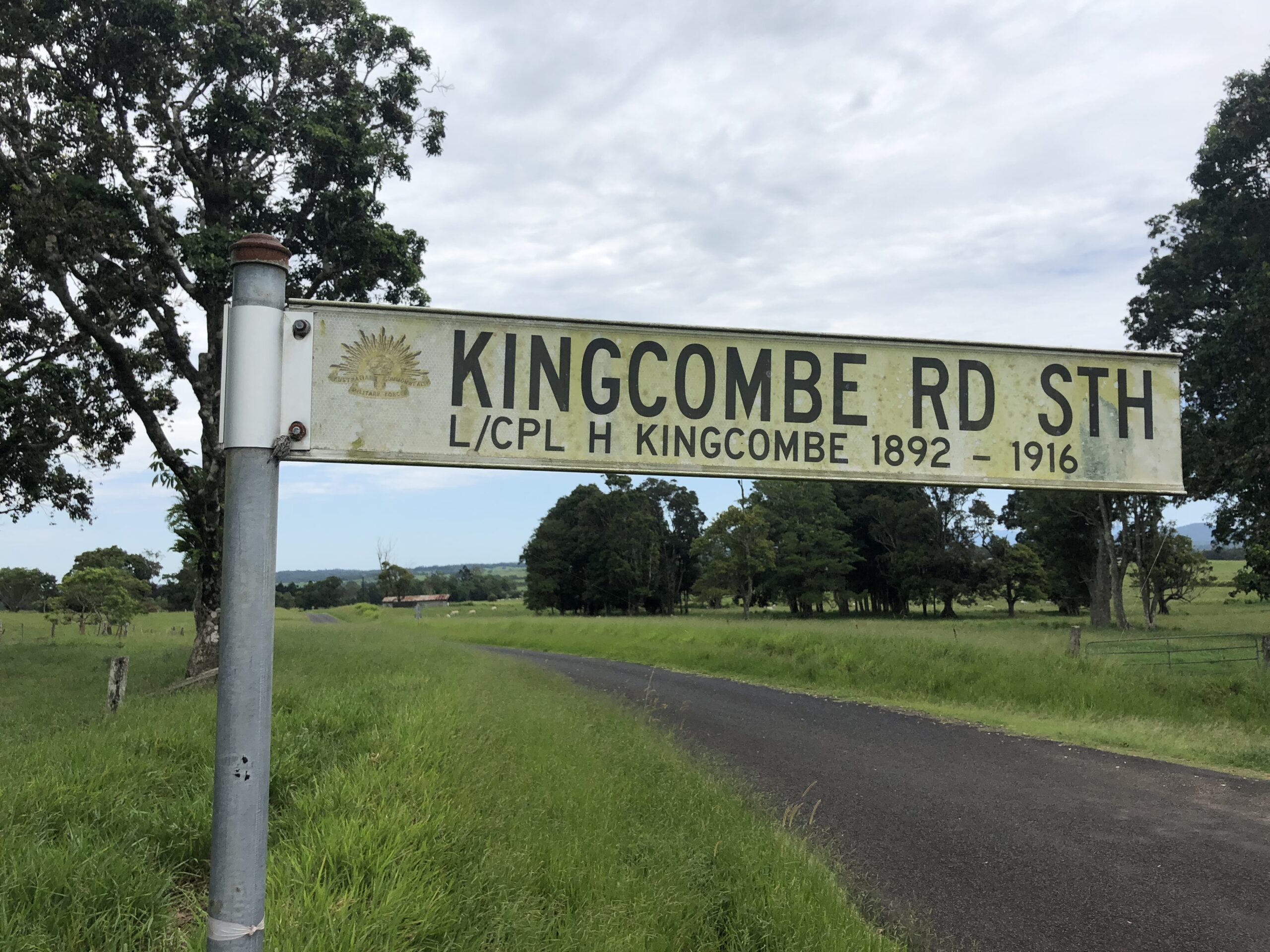
Memorial tree plantings were undertaken in the 1980s and, in 1992, a commemorative plaque was installed on a freeform marble slab to commemorate both pioneers and service personnel of the district.
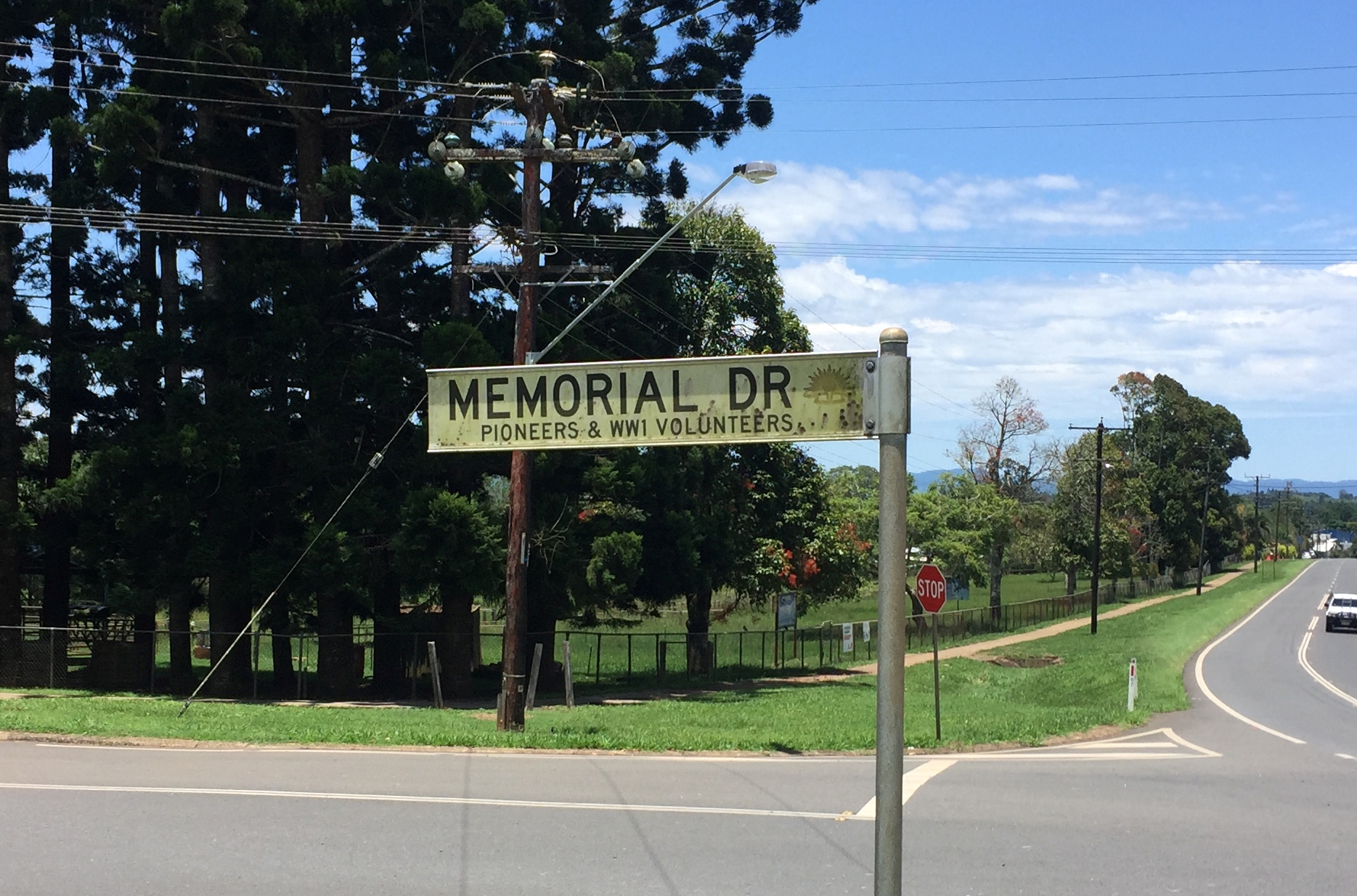
General Sir John Monash (1865–1931)
General Sir John Monash trained as an engineer and joined Melbourne University’s Metropolitan Brigade of the Garrison Artillery aged 22 years. During the early stages of the First World War he commanded the 4th Brigade AIF in the Middle East. In 1916 he was promoted to Major General serving on the western front. This was followed, in May 1918, with appointment as Commander of Australian Forces. General Monash’s tactical skills and a belief in a coordinated approach to military engagements won him a reputation as an outstanding commander and a knighthood. In the postwar period he continued to excel in various public offices. Monash died in 1931 and was given a state funeral attended by at least 250,000 people.
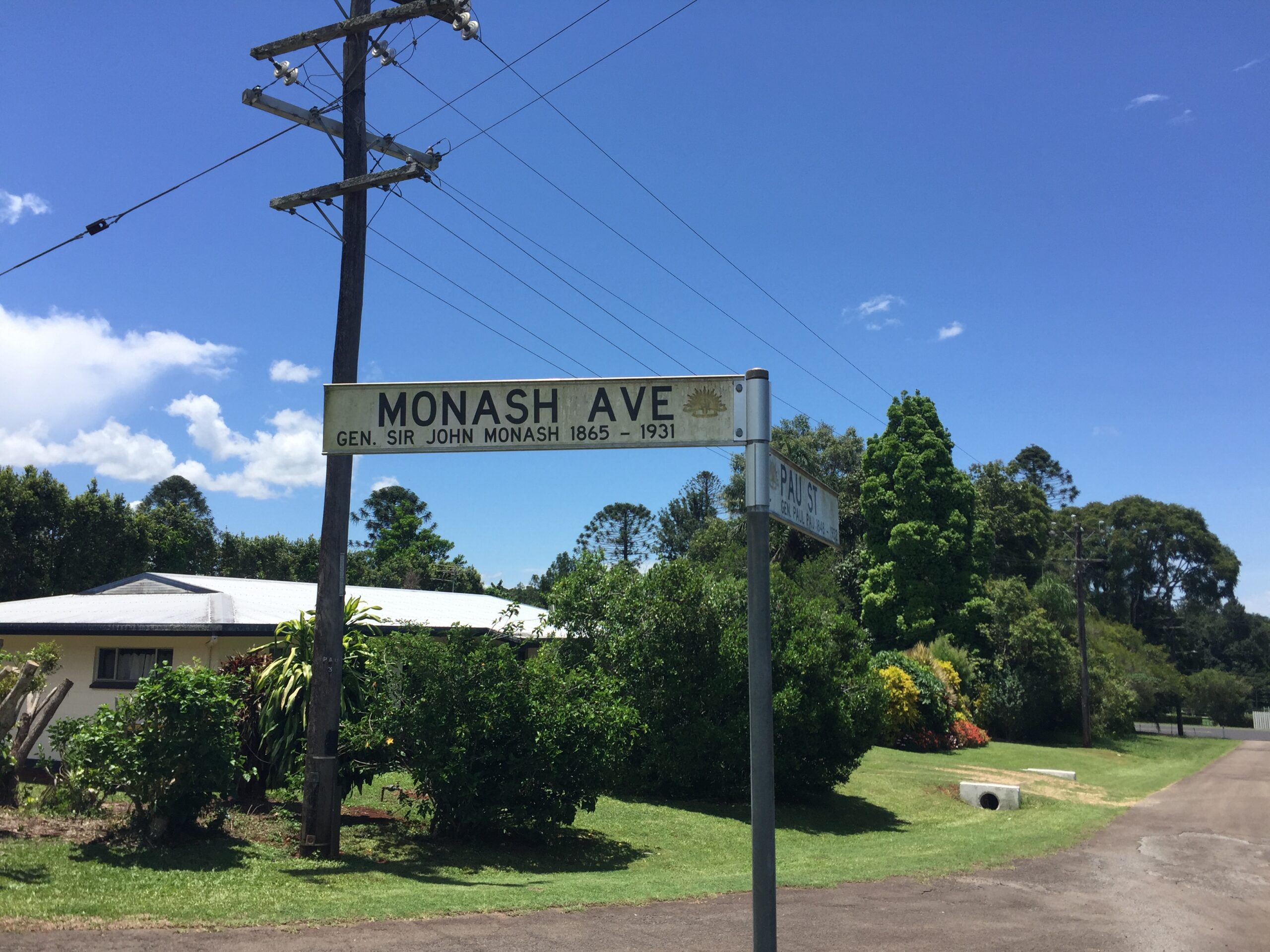
Dr Leslie (Bill) John Jarvis Nye (1891–1976)
Dr Leslie (Bill) John Jarvis Nye joined the AIF as a medical officer at the outbreak of the First World War. He was accepted as part of a contingent of fifteen doctors who sailed for London in March 1915 and transferred to the British Military. Nye served initially at No 10 General Hospital, Rouen, France. A gas attack rendered him an invalid and was returned to Australia in 1917.
Leslie married Eileen Atherton (Chillagoe Station) in 1920, practiced medicine in Atherton and was superintendent of Atherton Hospital until moving to Brisbane in 1926. He served on numerous major welfare groups including RS, Legacy, Marriage Guidance and Rotary Sub-Normal Children’s Welfare Association. He died in Brisbane in 1976.
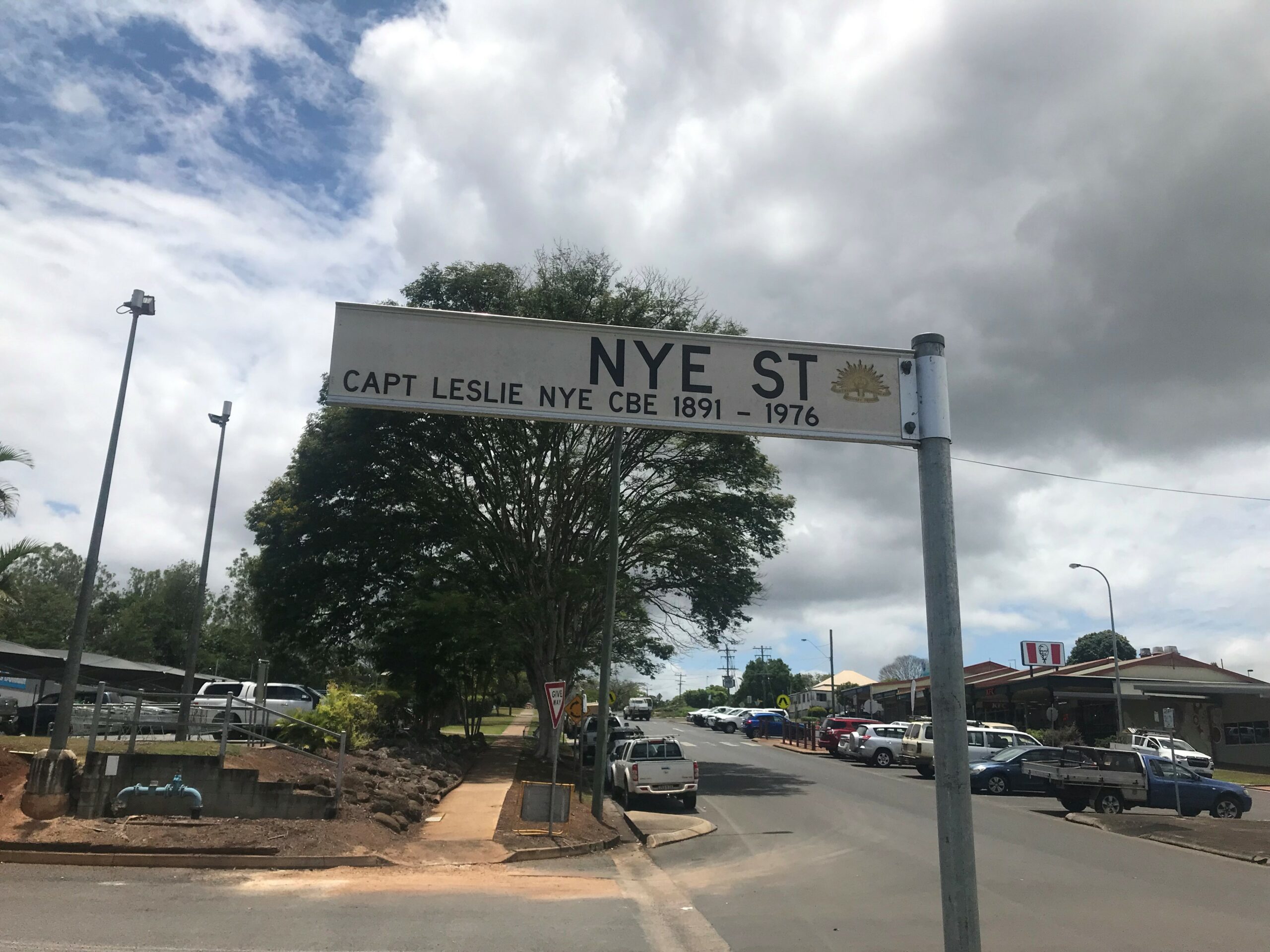
General Paul Pau (1848–1932)
General Paul Pau (France) served in the French Army in both the Franco-Prussian War and the First World War. He was appointed General in 1903 and returned in 1911 only to be recalled briefly in 1914. He went on to serve on the French Supreme War Council and toured Australia in 1918 attending many war rallies. Pau died in Paris in 1932.

Battle of Pozieres 1916
Pozieres was a focal point of the Battle of the Somme. Between 23 July and 3 Sept 1916, Anzac troops, hardened by their time at Gallipoli and freshly arrived in the region, were tasked with securing Pozieres Ridge. Australian casualties were in excess of 22,000 including 6800 deaths. Despite the huge casualties and lengthy engagement with the enemy, the ridge was finally taken in August. It was the only Allied success of the Battle of the Somme. The British commander, Sir Hubert Gough, was strongly criticised by Australians for the excessive casualties that they incurred.
